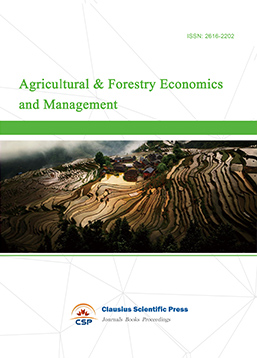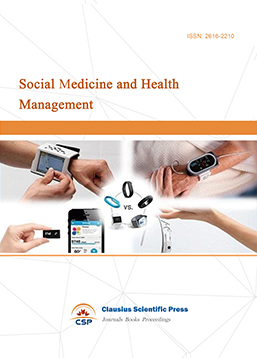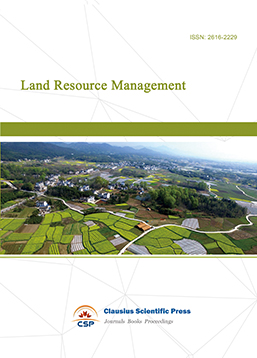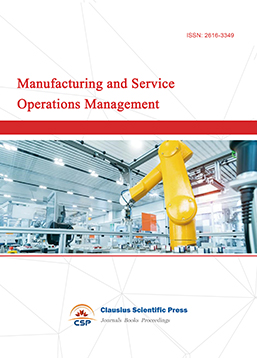The Impact of Corporate Debt on Corporate Innovation Behavior: Evidence from China
DOI: 10.23977/ieim.2023.061005 | Downloads: 11 | Views: 1360
Author(s)
Changting Huang 1, Desheng Tang 1, Mei Li 1
Affiliation(s)
1 School of Economics, Guangxi University/China-ASEAN Institute of Financial Cooperation, Nanning, Guangxi, China
Corresponding Author
Desheng TangABSTRACT
This article uses data from Chinese A-share listed companies from 2002 to 2018 and employs a fixed-effects model to identify the impact of corporate leverage on corporate innovation behavior. The results show that corporate leverage significantly hinders corporate innovation behavior. After conducting robustness tests, the conclusion remains valid. Further research reveals that state-owned enterprises exacerbate the impact of corporate leverage on corporate innovation behavior, while external supervisory mechanisms mitigate this effect.
KEYWORDS
Leverage, Innovation, Corporate GovernanceCITE THIS PAPER
Changting Huang, Desheng Tang, Mei Li, The Impact of Corporate Debt on Corporate Innovation Behavior: Evidence from China. Industrial Engineering and Innovation Management (2023) Vol. 6: 31-40. DOI: http://dx.doi.org/10.23977/ieim.2023.061005.
REFERENCES
[1] Solow, R. M., 1957, "Technical Change and the Aggregate Production Function", Review of Economics and Statistics 39, 312-320.
[2] Jia, N., and X. Tian, 2018, Accessibility and materialization of firm innovation, Journal of Corporate Finance 48, pp. 515–541.
[3] Li, X., F. Moshirian, X. Tian, and B. Zhang, 2016, The real effect of financial disclosure: International evidence, Working Paper, London School of Economics.
[4] Luong, H., F. Moshirian, L. H. G. Nguyen, X. Tian, and B. Zhang, 2017, How do foreign institutional investors enhance firm innovation? Journal of Financial and Quantitative.
[5] Ferreira, D., G. Manso, and A. C. Silva, 2014, Incentives to innovate and the decision to go public or private, Review of Financial Studies 27, pp. 256–300.
[6] Liu, T., M. Sevilir, and X. Tian, 2016b, Acquiring innovation, Working Paper, University of Pennsylvania.
[7] Kortum, S., and J. Lerner, 2000, Assessing the contribution of venture capital to innovation, RAND Journal of Economics 31, pp. 674–692.
[8] Tan, J. Innovation and Risk-taking in a Transitional Economy: A Comparative Study of Chinese Managers and Entrepreneurs. Journal of Business Venturing, 2001, 16 (4): 359-376.
[9] Tian, X., and T. Wang, 2014, Tolerance for failure and corporate innovation, Review of Financial Studies 27, pp. 211–255.
[10] Luo, Y, and F. Zhu. Financialization of the Economy and Income Inequality in China [J]. Economic and Political Studies, 2014, 2(2): 46-66.
[11] Tian, X., Wang, T. Tolerance for Failure and Corporate Innovation. The Review of Financial Studies, 2011, 27(1): 211-255.
[12] Liu, T., Mao, Y., Tian, x. The Role of Human Capital: Evidence from Patent Generation. Social Science Electronic Publishing, 2016.
[13] Chang, X., Fu, K., Low, A., Zhang, W. Non-executive Employee stock Options and Corporate Innovation. Journal of Financial Economics, 2015, 115 (1):168-188.
[14] Holmstrom, B. Agency Costs and Innovation. Journal of Economic Behavior & Organization, 1989, 12(3): 305-327.
[15] Manso, G. Motivating Innovation. The Journal of Finance, 2011, 66(5):1823-1860.
[16] Armstrong, C. S., Vashishtha, R. Executive Stock Options, Differential Risk-taking Incentives, and Firm Value. Journal of Financial Economics, 2012, 104(1):70-88.
[17] Coles, J. L, Daniel, N. D., Naveen, L. Managerial Incentives and Risk-taking. Journal of Financial Economics, 2006, 79 (2): 431-468.
[18] He, J. J., Tian, X. The Dark Side of Analyst Coverage: The Case of Innovation. Journal of Financial Economics, 2013, 109(3): 856-878.
[19] Fang, V. W., Tian, X., Tice, s. Does Stock Liquidity Enhance or Impede Firm Innovation? The Journal of Finance, 2014, 69(5): 2085-2125.
[20] Chemmanur, J. C., Loutskina, E., Tian, X. Corporate Venture Capital, Value Creation, and Innovation. Review of Financial Studies, 2014, 27(8): 2434-2473.
[21] Brown, J., S. Fazzari, and B. Petersen, 2009, Financing innovation and growth: Cash flflow, external equity, and the 1990s R&D boom, Journal of Finance 64, pp. 151–185.
[22] Jia, N., X. Tian, and W. Zhang, 2016, The holy grail of teamwork: Management team synergies and firm innovation, Working Paper, Tsinghua University.
[23] Rosenberg, N., 2004, Innovation and economic growth, OECD1–6. Available from: www. oecd. org /dataoecd/ 55/49 /3426/7902. pdf.
[24] Chava, S., A. Oettl, A. Subramanian, and K. Subramanian, 2013, Banking deregulation and innovation, Journal of Financial Economics 109, pp. 759–774.
[25] Amore, M., C. Schneider, and A. Zaldokas, 2013, Credit supply and corporate innovation, Journal of Financial Economics 109, pp. 835–855.
[26] Acharya, V., and Z. Xu, 2017, Financial dependence and innovation: The case of public versus private fifirms, Journal of Financial Economics 124, pp. 223–243.
[27] Aghion, P., J. Van Reenen, and L. Zingales, 2013, Innovation and institutional ownership, American Economic Review 103, pp. 277–304.
[28] Chemmanur, T., and P. Fulghieri, 2014, Entrepreneurial finance and innovation: An introduction and agenda for future research, Review of Financial Studies 27, pp. 1–19.
[29] Bernstein, S., 2015, Does going public affect innovation? Journal of Finance 70, pp. 1365– 1403.
[30] Ederer, F., and G. Manso, 2013, Is pay for performance detrimental to innovation? Management Science 59, pp. 1496–1513.
[31] He, J., and X. Tian, 2013, The dark side of analyst coverage: The case of innovation, Journal of Financial Economics 109, pp. 856–878.
| Downloads: | 27006 |
|---|---|
| Visits: | 812563 |
Sponsors, Associates, and Links
-
Information Systems and Economics

-
Accounting, Auditing and Finance

-
Tourism Management and Technology Economy

-
Journal of Computational and Financial Econometrics

-
Financial Engineering and Risk Management

-
Accounting and Corporate Management

-
Social Security and Administration Management

-
Population, Resources & Environmental Economics

-
Statistics & Quantitative Economics

-
Agricultural & Forestry Economics and Management

-
Social Medicine and Health Management

-
Land Resource Management

-
Information, Library and Archival Science

-
Journal of Human Resource Development

-
Manufacturing and Service Operations Management

-
Operational Research and Cybernetics


 Download as PDF
Download as PDF